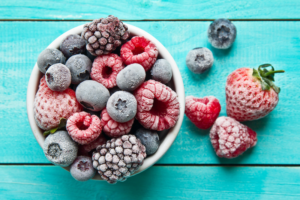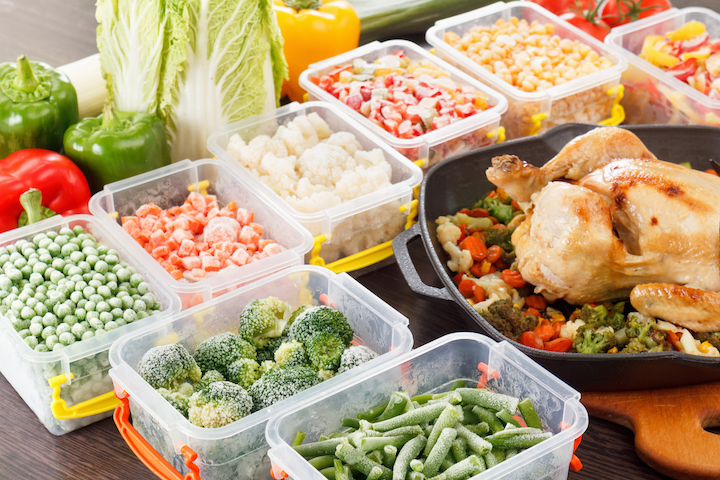Freezing produce and buying in-season are two easy ways to save money. Freezing leads to less waste, and shopping seasonally allows you to buy produce at a lower cost. What’s even better is that freezing ripe produce means you keep the item at its highest nutrient content. A freezer of prepped produce saves trips to the store and eases mealtime stress. Sounds like a good deal, right? Here’s a guide to help you shop and use in-season summer fruits and vegetables.
Packaging
Packages that freeze well include plastic freezer containers, freezer bags, or canning jars. It’s best not to use cardboard cartons because they aren’t moisture-resistant. Regular glass jars are not recommended because they break easily at low temperatures.
To prepare vegetables:
- Wash and chop before placing in boiling water for one minute
- Remove vegetables and quickly place under cold running water to decrease risk of spoilage
Tip: Preserve summer herbs such as basil or mint by placing in an ice cube tray and filling with oil. Oil decreases the chance of browning and freezer burn. Toss them in a pan when you’re ready to use them!

Freeze berries for a cool, summertime treat by themselves or over low-fat yogurt.
To prepare fruits:
- Fruits should be fully ripe and soft in texture
- All washing, peeling, or cutting should be done before freezing
Tip: Prevent a mushy mess by laying pieces or whole berries onto a baking sheet. Place the baking sheet in the freezer. Once the fruit is frozen, then put them in an airtight, freezer-safe container, label with the use by date, and refreeze.
Summer Produce
Fruits and veggies keep for 6 to 12 months in the freezer. Don’t freeze those with too much water like apples, oranges, or leafy greens.
Summer veggies to freeze:
- bell peppers, carrots, corn, green beans, lima beans, garlic, and summer squash
Summer fruits to freeze:
- apricots, mangos, bananas, blackberries, blueberries, cherries, eggplant, peaches, plums, raspberries, strawberries, and tomatoes
Thawing
Thaw produce by placing it in the fridge, running the container under cold water, or place container in a cold-water bath. Never thaw food at room temperature or in warm water because this can cause bacteria to grow.
Ways to use frozen fruits and veggies
You can blend fruits into a nutrient rich smoothie, bake into a cobbler, or defrost and puree them to top off whole-grain waffles. Vegetables can be steamed, cooked in casseroles, and added to soups. There are plenty of easy freezer meals to choose from!
Freezing produce saves valuable time and money. Which of your favorite fruits or veggies will you freeze this summer?
By Megan Wickham

